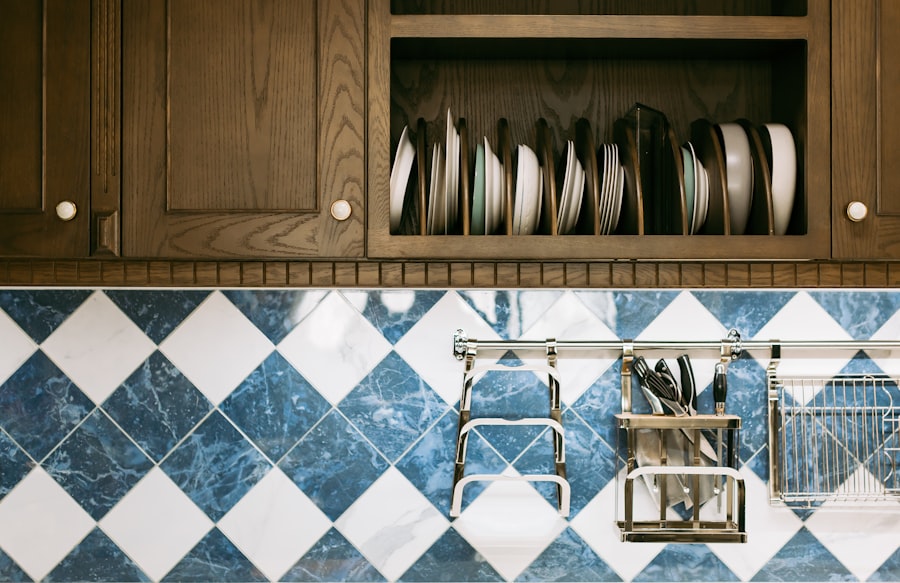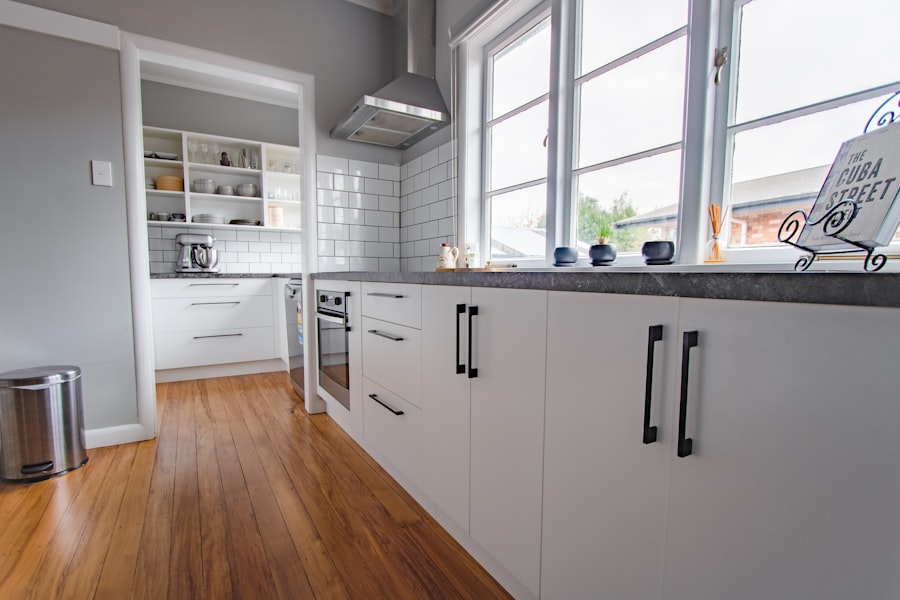When embarking on a kitchen renovation, several factors come into play that can significantly influence the overall cost. One of the primary considerations is the size of the kitchen. A larger kitchen typically requires more materials, labor, and time, which can escalate expenses.
For instance, a small kitchen might only need a few cabinets and countertops, while a sprawling space could necessitate extensive cabinetry, flooring, and even structural changes. The layout also plays a crucial role; an open-concept design may require more complex plumbing and electrical work compared to a traditional closed-off kitchen. Another critical factor is the choice of materials.
High-end finishes such as granite countertops, custom cabinetry, and premium flooring can dramatically increase costs. Conversely, opting for more budget-friendly materials like laminate or vinyl can help keep expenses in check. Additionally, the complexity of the renovation itself can affect costs.
If the project involves moving plumbing or electrical systems, it will likely require more skilled labor and time, leading to higher expenses. Homeowners must also consider their location; renovations in urban areas often come with higher labor costs due to demand and living expenses.
Key Takeaways
- Kitchen renovation costs are influenced by factors like size, materials, and design complexity.
- Material costs vary widely, with options ranging from budget-friendly to high-end finishes.
- Labor expenses can be a significant portion of the budget, depending on the scope and location.
- Appliances and fixtures add to the overall cost and should be chosen based on quality and functionality.
- Budgeting carefully and considering DIY options can help save money, but professional help ensures quality and efficiency.
Average Cost of Materials for Kitchen Renovation
The cost of materials is a significant component of any kitchen renovation budget. On average, homeowners can expect to spend anywhere from $10,000 to $30,000 on materials alone, depending on the scope of the project and the quality of materials chosen. Cabinets are often one of the most substantial expenses, with stock cabinets costing around $100 to $300 per linear foot, while custom options can soar to $1,000 or more per linear foot.
The choice between ready-to-assemble and custom-built cabinets can lead to considerable savings or increased spending. Countertops also vary widely in price. For example, laminate countertops can be as low as $20 per square foot, while natural stone options like granite or quartz can range from $50 to $150 per square foot.
Flooring choices further contribute to material costs; tile flooring may cost between $5 to $15 per square foot, while hardwood can range from $8 to $20 per square foot. Backsplashes, sinks, and faucets add additional layers of expense, with high-quality fixtures often costing several hundred dollars each. Homeowners should carefully evaluate their material choices to align with their budget while still achieving their desired aesthetic.
Labor Costs for Kitchen Renovation

Labor costs are another significant factor in determining the total expense of a kitchen renovation. On average, labor can account for 20% to 35% of the overall budget. The complexity of the renovation will dictate labor costs; for instance, simple cosmetic updates like painting or replacing hardware will generally require less labor than a full remodel that involves structural changes or extensive plumbing work.
Skilled tradespeople such as electricians, plumbers, and carpenters typically charge higher rates due to their expertise. In metropolitan areas, labor costs can be particularly steep due to demand and the cost of living. For example, hiring a general contractor may cost between $50 to $150 per hour, while specialized trades may charge even more.
It’s essential for homeowners to obtain multiple quotes from contractors to ensure they are getting a fair price for labor. Additionally, some homeowners may choose to take on certain tasks themselves to save on labor costs; however, this approach requires careful consideration of one’s skills and available time.
Cost of Appliances and Fixtures
| Appliance/Fixture | Average Cost | Installation Cost | Total Estimated Cost | Notes |
|---|---|---|---|---|
| Refrigerator | 800 – 2000 | 100 – 200 | 900 – 2200 | Depends on size and features |
| Dishwasher | 400 – 1200 | 150 – 300 | 550 – 1500 | Energy-efficient models cost more |
| Oven/Range | 600 – 2500 | 200 – 400 | 800 – 2900 | Gas or electric options available |
| Microwave | 100 – 500 | 50 – 100 | 150 – 600 | Countertop or built-in models |
| Bathroom Sink | 100 – 400 | 150 – 300 | 250 – 700 | Material affects price |
| Toilet | 150 – 500 | 100 – 250 | 250 – 750 | Water-saving models cost more |
| Lighting Fixtures | 50 – 300 | 75 – 200 | 125 – 500 | Varies by style and complexity |
The selection of appliances and fixtures is a crucial aspect of any kitchen renovation and can significantly impact the overall budget. High-quality appliances are often seen as an investment in both functionality and aesthetics. For instance, a mid-range refrigerator can cost between $1,000 and $2,500, while high-end models may exceed $5,000.
Similarly, ranges and ovens vary widely in price; a basic model might start at around $600, whereas professional-grade options can reach upwards of $10,000. Fixtures such as sinks and faucets also contribute to the overall cost. A standard kitchen sink may range from $200 to $600, while designer options can go well beyond that.
Faucets typically range from $100 to over $1,000 depending on the brand and features such as pull-down sprayers or touchless technology. Homeowners should consider not only the initial purchase price but also the long-term energy efficiency and durability of appliances when making their selections. Investing in energy-efficient models may lead to savings on utility bills over time.
Additional Costs to Consider for Kitchen Renovation
Beyond the primary expenses associated with materials, labor, and appliances, there are several additional costs that homeowners should factor into their kitchen renovation budget. One often-overlooked expense is permits and inspections. Depending on local regulations and the scope of the renovation, permits may be required for plumbing or electrical work, which can add several hundred dollars to the overall cost.
Another potential expense is unexpected repairs that may arise during the renovation process. For example, when removing old cabinets or flooring, homeowners may discover underlying issues such as water damage or mold that need to be addressed before proceeding with the remodel. Setting aside a contingency fund—typically around 10% to 20% of the total budget—can help mitigate these unforeseen costs.
Additionally, homeowners should consider the cost of temporary housing or meal preparation if the kitchen will be out of commission for an extended period during renovations.
Ways to Save on Kitchen Renovation Costs

While kitchen renovations can be costly endeavors, there are numerous strategies homeowners can employ to save money without sacrificing quality or style. One effective approach is to prioritize cosmetic updates over structural changes. For instance, instead of completely replacing cabinets, consider repainting or refacing them for a fresh look at a fraction of the cost.
Similarly, updating hardware such as knobs and pulls can provide a significant aesthetic boost without breaking the bank. Another way to save is by shopping sales and discounts for materials and appliances. Many retailers offer seasonal sales or clearance events where homeowners can find high-quality items at reduced prices.
Additionally, considering alternative materials—such as quartz instead of granite for countertops—can yield substantial savings while still providing a stylish appearance. Homeowners should also explore local salvage yards or online marketplaces for gently used fixtures and appliances that can add character to their kitchens at a lower cost.
Budgeting Tips for Kitchen Renovation
Creating a comprehensive budget is essential for any successful kitchen renovation project. Start by determining a realistic overall budget based on your financial situation and desired outcomes. It’s crucial to include all potential costs—materials, labor, appliances, permits, and contingency funds—to avoid surprises down the line.
Breaking down the budget into categories can help homeowners visualize where their money will go and identify areas where they might be able to cut back. Additionally, tracking expenses throughout the renovation process is vital for staying within budget. Keeping receipts and maintaining a detailed record of spending can help homeowners identify any discrepancies and make adjustments as needed.
It’s also wise to communicate openly with contractors about budget constraints; many professionals are willing to work within specified limits and may offer suggestions for cost-saving alternatives.
Deciding whether to hire a professional or tackle a kitchen renovation as a DIY project involves weighing various pros and cons. Hiring professionals offers several advantages; they bring expertise and experience that can lead to higher-quality results and potentially save time in completing the project. Professionals are also familiar with local building codes and regulations, ensuring that all work is compliant with safety standards.
On the other hand, DIY renovations can provide significant savings on labor costs and allow homeowners greater control over design choices. However, this approach requires a certain level of skill and knowledge; mistakes made during DIY projects can lead to costly repairs down the line. Additionally, taking on too much work without adequate time or resources can result in unfinished projects that disrupt daily life.
Ultimately, the decision between hiring professionals or going the DIY route depends on individual circumstances such as budget constraints, skill level, and available time for the project. Homeowners should carefully assess their capabilities and consider seeking professional help for more complex tasks while handling simpler updates themselves.




